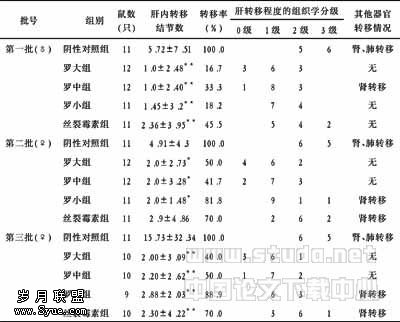Toll样受体在创伤性脑损伤中的作用与调控研究
【摘要】 创伤性脑损伤(TBI)平战时常见,残死率极高。TBI病理进程中非感染性炎症反应(简称TBI炎症反应)起重要作用,直接影响TBI的预后和转归。由于TBI炎症反应的发生机制迄今不明,临床仍缺乏有效的干预手段。最新研究显示:Toll样受体(TLRs)可介导非感染性炎症反应,其家族成员TLR2/4(TLR2或TLR4)与某些中枢疾患的非感染性炎症反应相关。目前有关TLR2/4在TBI炎症反应中作用与调控的研究开始受到学者注意,国内外研究报道极少,有望成为一个新的研究热点。本文对此予以评述。
【关键词】 颅脑损伤;炎症反应;受体
Abstract: Traumatic brain injury(TBI) is a common disease among peace?time and war time injuries,with high morality and morbidity.The non?infective inflammatory reactions play an important role in the pathological process in TBI which affect directly the prognosis and turnover of TBI.The mechanism of these inflammatory reactions is unknown,and so the clinical practice is still lack of interventional strategies to cope with TBI.The newest research demonstrates that the toll?like receptors(TLRs) mediates non?infective inflammatory reactions and their family members TLR2/4(TLR2 or TLR4) are associated with non?infective inflammation in some diseases in central neuvous system.Recently the studies on the effect and mechanism of TLR2/4 in the TBI have been noted.The related studies are rarely reported nationally and internationally.It is possible for TLR2/4 to be a new research focus.The problems relating to TLR2/4 are discussed and reviewed in this paper.
Key words:brain injury;inflammatory reaction;receptors
创伤性脑损伤(TBI)平战时常见,残死率极高[1,2]。在TBI的继发病理进程中非感染性炎症反应(简称TBI炎症反应)起重要作用,直接影响TBI的转归和预后。迄今对TBI炎症反应的发生机制尚不清楚,因而临床仍缺乏有效的干预手段[3,4]。
Toll样受体(TLRs)表达于免疫细胞表面,不仅可启动机体抗感染性免疫炎症反应,最新研究证实,TLRs还在非感染性免疫炎症反应的介导和信号转导中发挥重要作用[5-7]。另有研究显示,TLRs还可作为靶分子,在一定程度上干预炎症反应[8,9]。 TLRs与中枢非感染性炎症反应的研究刚刚开始不久,尽管现有资料已表明:TLRs成员TLR2和TLR4与中枢非感染性炎症的关系最为密切[10-12],但仍存在较大分歧。如有研究发现:TLR2主要与局部脑缺血和中枢退行性病变的炎症反应相关[13,14];另有报道:TLR4在脑缺血性疾病和阿尔茨海默氏病的炎症反应中起关键作用[15,16];还有学者指出:TLR2/4(TLR2或TLR4)所诱导的炎症反应受其复合受体CD14(cluster of differenciation antigen 14)的影响[17]。可见,TLR2/4与中枢非感染性炎症关系的研究尚需进一步深入,特别是有关TBI炎症反应中TLR2/4作用与机制的研究,目前国内外尚无报道[18]。
1 TBI炎症反应机制研究现状
TBI的发生率约占全身损伤的15%,是45岁以下个体死亡的首要原因。西欧10年来城市数据统计,每年TBI发生率7.3/10万,整体死亡率45.8%[1,2]。在TBI的病理进程中,炎症反应起重要作用。一方面炎症反应可修复损伤组织,另一方面过度的炎症反应又是导致继发性脑损伤的主要原因。TBI后的脑水肿和神经元坏死等均与脑内炎症反应密切相关。因而,对于 TBI的研究已由创伤学、神经内和神经外科学领域深入到炎症和免疫性疾病的范畴[3,4]。从TBI炎症的启动看,虽然已知细胞损伤后可产生热休克蛋白、氧自由基、兴奋性谷氨酸、胞外基质降解产物等所谓“内源性危险信号”[12,19],但这些信号是否、如何被脑内小胶质细胞识别,并诱发脑组织炎症反应,目前尚不明确。从TBI炎症的调控看,TBI后小胶质细胞活化释放的多种细胞因子(TNFα、IL?1、IL?6、IL?10),构成了复杂的炎症反应级联;应用细胞因子拮抗剂(TNF抗体、sTNFR、IL?1ra等)来抑制TBI炎症反应,临床效果微乎其微[3,20]。对整个炎症过程而言,仅靠拮抗某单一下游炎症介质,难以产生明显作用。因此,研究人员试图寻找调控整个TBI炎症反应进程的核心的上游分子。
2 Toll样受体的研究进展
2.1 TLRs可诱导和调控炎症反应 Toll样受体(toll-like receptors,TLRs)是识别入侵病原体的先天免疫受体,是一种模式识别受体(pattern?recognition receptors),能够识别外源性微生物及其产物的特定病原相关分子模式(pathogen?associated molecular patterns)。目前,人类已测定到10个TLRs成员,主要表达于单核细胞、巨噬细胞、小胶质细胞等天然免疫细胞。
TLRs信号能通过激活核转录因子NF?κB而诱导细胞因子的产生。TLRs属于I型跨膜蛋白,其胞外区段呈多样化,胞内有和IL?1受体相似的一个信号基序,称作TIR(Toll?IL?1?R)区段。激活的TLRs可招募衔接子蛋白到TIR区段,引起核转录因子NF?κB的活化,导致炎症和抗炎症细胞因子、趋化因子释放,并上调细胞表面分子(MHC?Ⅱ类分子及共刺激分子)的表达,形成适应性免疫炎症反应。TLRs的作用特点和治疗启示:(1)TLRs是免疫细胞分泌细胞因子的上游开关;(2)TLRs家族成员识别各自配体后可产生不同的炎症因子;(3)减少TLRs的信号转导,可降低炎症反应;(4)通过干扰TLRs的细胞外位点和(或)细胞内位点可调控炎症反应。因此,TLRs可作为诱导及调控炎症反应的靶分子,具有潜在的治疗意义[8,9]。
最新研究发现,TLRs家族成员TLR2和TLR4还可识别机体细胞受损后产生的内源性危险信号[5-8](如热休克蛋白、氧自由基、兴奋性谷氨酸、胞外基质降解产物等),同样通过激活核转录因子NF?κB,引发炎症反应,这使得人们在非感染性炎症研究中开始注意TLR2和TLR4的作用。
2.2 TLR2和TLR4的辅助分子CD14可调控炎症反应
CD14在TLR2和TLR4启动的信号转导途径中起关键辅助作用。膜CD14(mCD14)没有跨膜区,仅依靠糖基磷脂酰肌醇(GPI)锚定于细胞膜上。TLR2和TLR4等跨膜蛋白分子识别配体后,必须与mCD14组成复合受体,才能向细胞内传递炎症信号。研究显示:CD14可提高TLR2和TLR4识别配体能力,扩大炎症反应[11]。另有研究证实:CD14本身还是TLR2通路的激动剂[17]。可见,CD14对于调控由TLR2和TLR4介导的炎症反应具有重要意义。
2.3 TLR2/4与中枢非感染性炎症的研究存在分歧[21]
2.3.1 关于TLR2的研究:Letiembre[14]分析了TLR1?10成员在3种中枢退行性病变(阿尔茨海默氏病、帕金森氏病和肌萎缩性脊髓侧索硬化症)模型鼠中的变化,发现TLR2和CD14表达增高是3种模型鼠伴发的炎症病理过程中的共同特征,提示TLR2与这些中枢疾病的炎症反应相关。在小鼠内嗅区皮层切断致脑损伤的研究中发现:组织细胞损伤的危险信号由TLR2识别,TLR2表达变化导致小胶质细胞活化、增殖以及炎症因子的释放[22]。Ziegler[13]和Lehnardt[23]亦证实TLR2在中枢缺血性损伤中有诱导炎症反应、扩大缺血范围和加重脑损害的作用。
2.3.2 关于TLR4的研究:Caso[15]研究了缺血后脑内炎症反应与TLR4信号通路的关系,结果显示TLR4基因缺失鼠与对照相比,不仅炎症因子表达明显降低,而且梗塞范围小,神经和行为评估均显著优于同种对照。说明TLR4信号通路在缺血性脑损伤的病理过程中起重要作用。这一结果与上述Ziegler[13]和Lehnardt[23]对脑缺血的研究结果相互矛盾。此外,Cao[24]和Marta[25]还研究证实:TLR4与脑缺血后再灌注损伤和自身免疫性脑脊髓炎的中枢炎症反应密切相关。
总之,上述研究表明,TLR2/4参与了中枢神经系统非感染性炎症反应,但其作用结果存在较大分歧,尚需进一步深入研究。
2.4 TLR2/4在TBI炎症反应中的作用与机制
Babcock等[22]通过直接切断小鼠内嗅区皮层致颅脑损伤,证实TLR2具有加重脑损害的作用。但是该研究所采用的模型不是TBI模型(TBI是指外力作用下由加或减速度而导致的颅脑损伤)。尽管Park[26]和Chen[27]证实TBI与TLR2有关,但并未深入研究TLR2/4的作用与机制。目前,有关TLR2/4在TBI炎症反应作用机制的研究,国内外未见报道。
3 问题与展望
由于TLRs可启动和介导非感染性炎症反应,而且TLRs与中枢非感染性炎症反应关系的研究又起步较晚,因此,还有如下问题值得进一步研究和探讨:(1)TLR2/4与TBI炎症反应关系如何?(2)TLR2/4在TBI炎症反应中的作用?是否是启动因素?(3)TLR2/4是经过何种通路和下游关键分子而发挥作用的?(4)能否将TLR2/4或其复合受体CD14作为调控TBI炎症反应的靶分子?对上述问题进行深入探讨,对于进一步阐明TLR2/4在TBI炎症反应中的分子机制,提高TBI的诊治效果具有重要意义。我们认为,研究TLR2/4与TBI炎症反应的关系,明确TBI炎症反应的启动因素;阐明TLR2/4在TBI炎症反应中的作用与机制,发现TBI炎症反应的转导通路和关键分子;探讨TLR2/4作为TBI炎症反应调控靶分子的可行性、应用条件和临床价值。从TBI炎症反应的上游分子入手,探讨TBI炎症反应发生机制,对提高TBI诊治水平有重要意义,为中枢神经系统疾病的研究开辟了新思路。
【】
[1]Willemse?van Son AH,Ribbers GM,Verhagen AP,et al.Prognostic factors of long?term functioning and productivity after traumatic brain injury: a systematic review of prospective cohort studies[J].Clin Rehabil,2007,21(11):1024-1037.
[2]Maegele M,Engel D,Bouillon B,et al.Incidence and outcome of traumatic brain injury in urban area in Western Europe over 10 years[J].Eur Surg Res,2007,39(6):372-379.
[3]Morganti?Kossmann MC,Satgunaseelan L,Bye N,et al.Modulation of immune response by head injury[J].Injury,2007,38(12):1392-1400.
[4]Schmidt OI,Heyde CE,Ertel W,et al.Closed head injury?an inflammatory disease[J].Brain Res Brain Res Rev,2005,48(2):388-399.
[5]Asea A,Rehli M,Kabingu E,et al.Novel signal transduction pathway utilized by extracellular HSP70: role of toll?like receptor (TLR) 2 and TLR4[J].J Biol Chem,2002,277:15028-15034.
[6]Park JS,Svetkauskaite D,He Q,et al.Involvement of toll?like receptors 2 and 4 in cellular activation by high mobility group box 1 protein[J].J Biol Chem,2004,279(9):7370-7377.
[7]Scheibner KA,Lutz MA,Boodoo S,et al.Hyaluronan fragments act as an endogenous danger signal by engaging TLR2[J].J Immunol,2006,177(2):1272-1281.
[8]Schmidt C.Toll?like receptor therapies compete to reduce side effects[J].Nat Biotechnol,2006,24(3):230-231.
[9]Travis K.Deciphering immunology's dirty little secret[J].Scientist,2007,21(1):46-49.
[10]Crack PJ,Bray PJ.Toll?like receptors in the brain and their potential roles in neuropathology[J].Immunol Cell Biol,2007,85(6):476-480.
[11]Aravalli RN,Peterson PK,Lokensgard JR.Toll?like receptors in defense and damage of the central nervous system[J].J Neuroimmune Pharmacol,2007,2(3):297-312.
[12]Tang SC,Arumugam TV,Xu X,et al.Pivotal role for neuronal toll?like receptors in ischemic brain injury and functional deficits[J].Proc Natl Acad Sci USA,2007,21:104(34):13798-137803.
[13]Ziegler G,Harhausen D,Schepers C,et al.TLR2 has a detrimental role in mouse transient focal cerebral ischemia[J].Biochem Biophys Res Commun,2007,359(3):574-579.
[14]Letiembre M,Liu Y,Walter S,et al.Screening of innate immune receptors in neurodegenerative diseases: a similar pattern[J].Neurobiol Aging,2007,28:.
[15]Caso JR,Pradillo JM,Hurtado O,et aI.Toll?like receptor 4 is involved in brain damage and inflammation after experimental stroke[J].Circulation,2007,27,115(12):1599-1608.
[16]Walter S,Letiembre M,Liu Y,et al.Role of the toll?like receptor 4 in neuroinflammation in Alzheimer's disease[J].Cell Physiol Biochem,2007,20(6):947-956.
[17]Bsibsi M,Bajramovic JJ,Van Duijvenvoorden E,et al.Identification of soluble CD14 as an endogenous agonist for Toll?Like receptor 2 on human astrocytes by genome?scale functional screening of glial cell derived proteins[J].GLIA,2007,55(5):473-482.
[18]黄卫东,费舟,章翔,等.体外培养大鼠脑皮层神经元机械性损伤模型的建立[J].第四军医大学学报,2004,25(4):307-309.
[19]Conti A,Sanchez?Ruiz Y,Bachi A,et al.Proteome study of human cerebrospinal fluid following traumatic brain injury indicates fibrin(ogen) degradation products as trauma?associated markers[J].J Neurotrauma,2004,21(7):854-863.
[20]Owens T,Babcock AA,Millward JM,et al.Cytokine and chemokine inter?regulation in the inflamed or injured CNS[J].Brain Res Brain Res Rev,2005,48(2):178-184.
[21]Kielian T.Toll?like receptors in central nervous system glial inflammation and homeostasis[J].J Neurosci Res,2006,83(5):711-730.
[22]Babcock AA,Wirenfeldt M,Holm T,et al.Toll?like receptor 2 signaling in response to brain injury: an innate bridge to neuroinflammation[J].J Neurosci,2006,26(49):12826-12837.
[23]Lehnardt S,Lehmann S,Kaul D,et al.Toll?like receptor 2 mediates CNS injury in focal cerebral ischemia[J].J Neuroimmunol,2007,190(1-2):28-33.
[24]Cao CX,Yang QW,Lv FL,et al.Reduced cerebral ischemia?reperfusion injury in Toll?like receptor 4 deficient mice[J].Biochem Biophys Res Commun,2007,353(6):509-514.
[25]Marta M,Andersson A,Isaksson M,et al.Unexpected regulatory roles of TLR4 and TLR9 in experimental autoimmune encephalomyelitis[J].Eur J Immunol,2008,38(2):565-575.
[26]Park C,Cho IH,Kim D,et al.Toll?like receptor 2 contributes to glial cell activation and heme oxygenase?1 expression in traumatic brain injury[J].Neurosci Lett,2008,431(2):123-128.
[27]Chen G,Shi J,Jin W,et al.Progesterone administration modulates TLRs/NF?{kappa}B signaling pathway in rat brain after cortical contusion[J].Ann Clin Lab Sci,2008,38(1):65-74.











